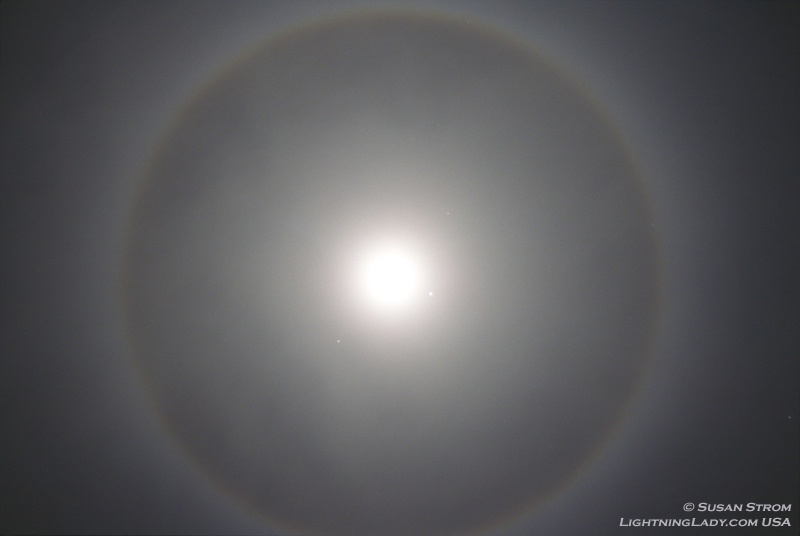Speaking of lunar coronas...a lunar corona does not necessarily require a sky/atmosphere.
It is possible to generate one, in very rare circumstances, by the mist at the base of a waterfall. My parents taught me how to find one when I was a child. It took special and rare conditions for it all to align perfectly, plus a hike to a rushing waterfall at 2 o'clock in the morning with my father while everyone else was konked out and warm in their beds, but lo and behold the darn thing was there. I remember what my dad said "That looks like a portal to another universe". It was quite a sight I have to say.
How to find a lunar rainbow (sans the sky):
Falls: Yosemite, California
Time of night: approx 2am
Time of year: May's full moon
Special conditions: Heavy spring runoff from a thick snowpack year
Falls condition: rushing, full, thunderous sound
Moon: Must be full
Sky: cloudless
Clothing needed: Rain parka; shoes with good traction
Hazards: Slippery surfaces, heavy mist, watch for loose rock
What not to do: Go off trail or near any water, rushing torrents of course, but not even near any still eddies or pools or climb on rocks.
What you'll see: A rainbow arc created at the base of the waterfall by the moon, with colors just at the ends.
How to photograph lunar rainbow: Fast film 800 ISO (transparency is preferred), B setting; bracketted exposure times and f-stops; heavy tripod, cable release, lens cloth/camera protection (cam and lens will get wet), wide angle lens. Or, you can just let that enchanting sight burn itself into your memory and let it stick with you for the rest of your life



